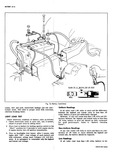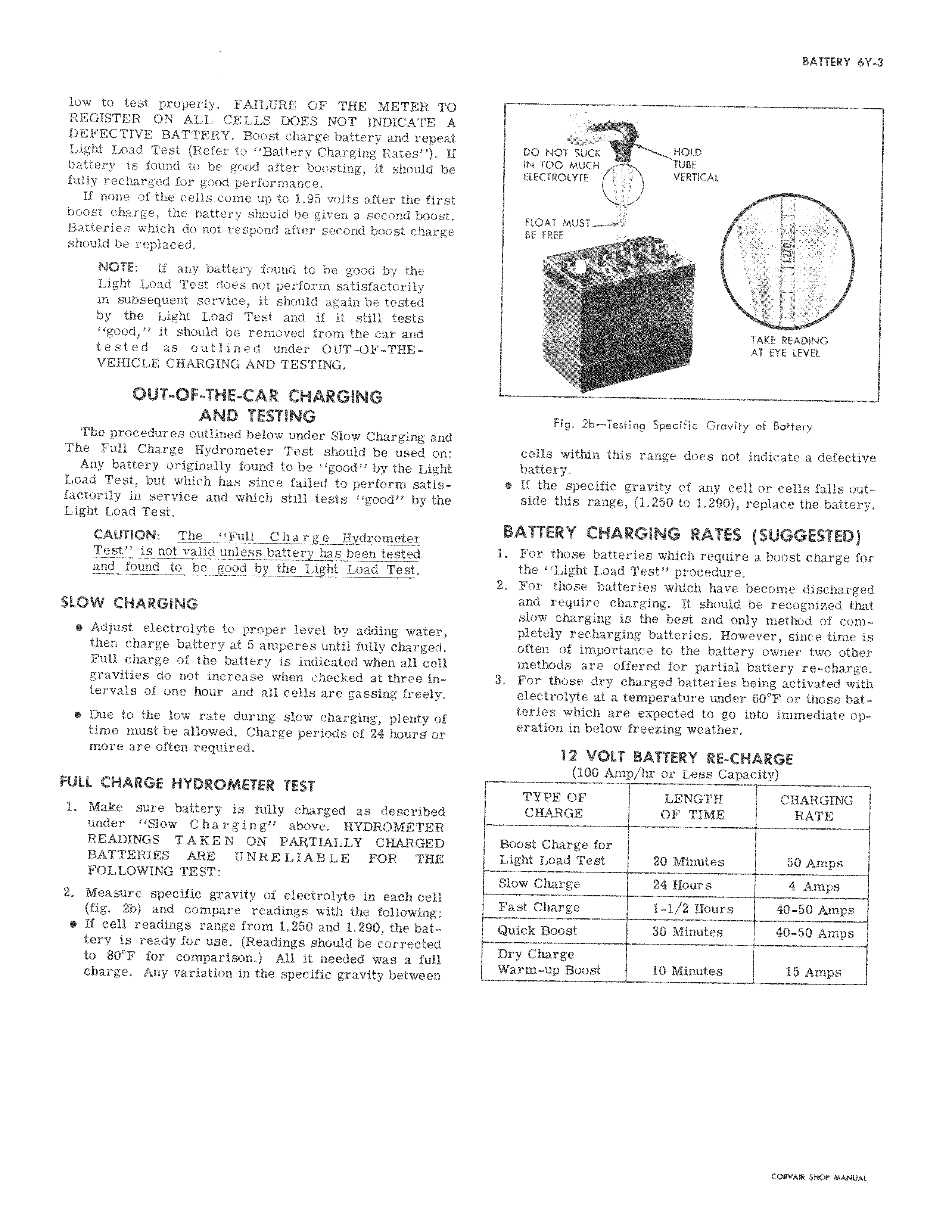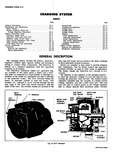Jeep Parts Wiki | Ford Parts Wiki
Home | Search | Browse
|
Corvair Chassis Shop Manual December 1964 |
|
Prev

 Next
Next
low to test properly FAILURE OF THE METER TO REGISTER ON ALL CELLS DOES NOT INDICATE A DEFECTIVE BATTERY Boost charge battery and repeat Light Load Test Refer to Battery Charging Rates If battery is found to be good after boosting it should be fully recharged for good performance If none of the cells come up to 1 95 volts after the first boost charge the battery should be given a second boost Batteries which do not respond after second boost charge should be replaced NOTE If any battery found to be good by the Light Load Test does not perform satisfactorily in subsequent service it should again be tested by the Light Load Test and if it still tests good it should be removed from the car and tested as outlined under OUT 0F THEVEHICLE CHARGING AND TESTING OUT OF THE CAR CHARGING AND TESTING The procedures outlined below under Slow Charging and The Full Charge Hydrometer Test should be used on Any battery originally found to be good by the Light Load Test but which has since failed to perform satisfactorily in service and which still tests good by the Light Load Test CAUTION The Full Charge Hydrometer Test is not valid unless battery has been tested and found to be good by the Light Load Test SLOW CHARGING Adjust electrolyte to proper level by adding water then charge battery at 5 amperes until fully charged Full charge of the battery is indicated when all cell gravities do not increase when checked at three intervals of one hour and all cells are gassing freely Due to the low rate during slow charging plenty of time must be allowed Charge periods of 24 hourg or more are often required FULL CHARGE HYDROMETER TEST 1 Make sure battery is fully charged as described under Slow Charging above HYDROMETER READINGS TAKEN ON PARTIALLY CHARGED BATTERIES ARE UNRELIABLE FOR THE FOLLOWING TEST 2 Measure specific gravity of electrolyte in each cell fig 2b and compare readings with the following If cell readings range from 1 250 and 1 290 the battery is ready for use Readings should be corrected to 80 F for comparison All it needed was a full charge Any variation in the specific gravity between DO NOT SUCK HOLD IN TOO MUCH TUBE ELECTROLYTE VERTICAL FLOAT MUST BE FREE r TAKE READING AT EYE LEVEL Fig 26 Testing Specific Gravity of Battery cells within this range does not indicate a defective battery If the specific gravity of any cell or cells falls outside this range 1 250 to 1 290 replace the battery BATTERY CHARGING RATES SUGGESTED 1 For those batteries which require a boost charge for the Light Load Test procedure 2 For those batteries which have become discharged and require charging It should be recognized that slow charging is the best and only method of completely recharging batteries However since time is often of importance to the battery owner two other methods are offered for partial battery re charge 3 For those dry charged batteries being activated with electrolyte at a temperature under 60 F or those batteries which are expected to go into immediate operation in below freezing weather 12 VOLT BATTERY RE CHARGE 100 Amp hr or Less Capacity TYPE OF LENGTH CHARGING CHARGE OF TIME RATE Boost Charge for Light Load Test 20 Minutes 50 Amps Slow Charge 24 Hours 4 Amps Fast Charge 1 1 2 Hours 40 50 Amps Quick Boost 30 Minutes 40 50 Amps Dry Charge Warm up Boost 10 Minutes 15 Amps

 Next
Next